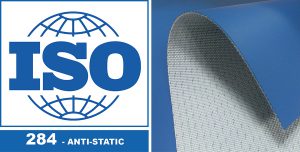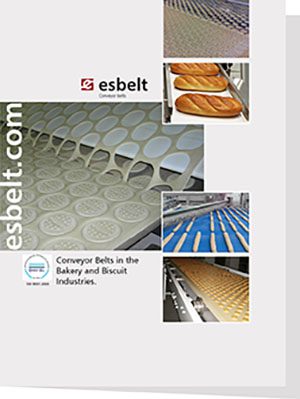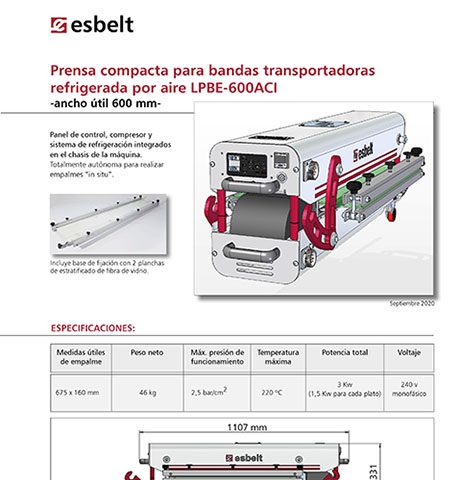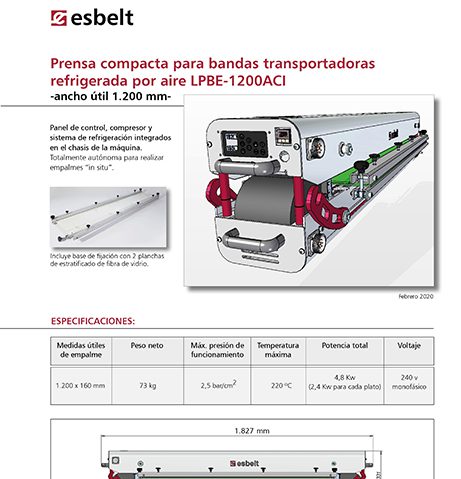Anti-static
Electrostatic charge in the conveyor belt may be caused by friction between the belt and the slider bed and/or the movement of the conveyed product or due to ionisation of the air (dry and dusty atmospheres). Although the static current is usually of low intensity, it can be the cause of problems for example when light pieces of product stay adhered to the topcover of the belt. In cases where there is risk of sparks, it could also be hazardous in environments sensitive to deflagration.
To prevent this problem, esbelt has developed a series of conveyor belts where certain components have been added to allow the characteristics of the belt to be changed to a form which instead of accumulating the static current, drives or directs it to the chassis of the conveyor.
The standard that currently regulates the measurement of surface electrical resistance is the ISO 284. Esbelt has a wide range of antistatic belts, for use with both horizontal conveyors and bucket elevators.
There are different anti-static levels or grades pertaining to the components cited below:
- Anti-static on both top and bottom cover
- Anti-static only in the top-cover
- Anti-static only in the bottom-cover
- Anti-static ISO 284 – especially for airport applications where the belts´ electric resistance must be equal or less than the maximum of 3 x 108 ohms and tested according to ISO-284 methods.
Some applications of anti-static belts









